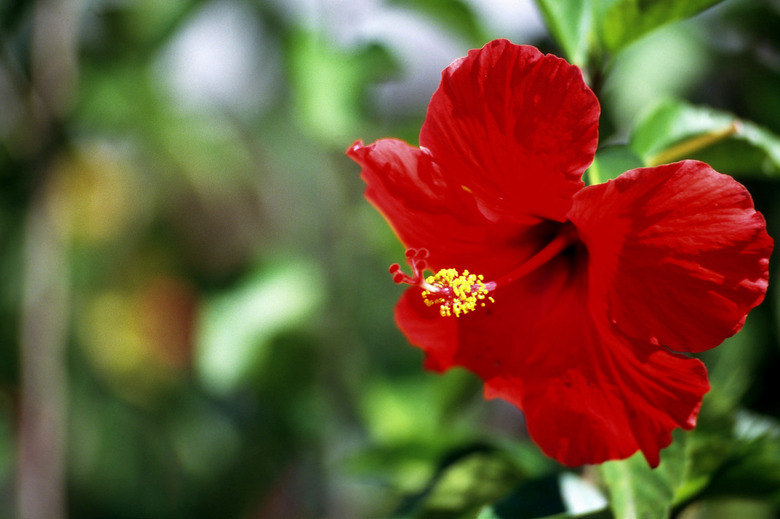Flowers That Last One Day
Sometimes the things held closest to the heart are the most fleeting. Just as children grow faster than weeds and leave home before you know it, certain flowers in your landscape may burst into a riot of color one day and then leave a trail of fallen petals the next. Nurturing flowers that only last a day, however, often rewards with the most beautiful blooms as plants mature. Careful placement among long-lasting perennials will ensure a well-rounded garden.
Daylily
Step 1
The daylily (Hemerocallis spp.) is represented by a huge genus of plants in the lily family, the scientific name for which means "beautiful for a day" in Greek. This Eurasian native provides colorful displays in rock gardens and along borders in US Department of Agriculture plant hardiness zones 3 through 9, especially planted en masse. Although flowering time is limited to a single day for each flower, there is no shortage in terms of variety. From just under a dozen species offering red, orange and yellow petals, thousands of cultivars have been developed that include pink, blue and purple flowers as well as banded, two-toned and multicolored specimens.
- Sometimes the things held closest to the heart are the most fleeting.
- Nurturing flowers that only last a day, however, often rewards with the most beautiful blooms as plants mature.
Hibiscus
Step 1
There are 17 North American species of hibiscus acclimated to USDA zones 4 through 10, either occurring wild in wetlands or in cultivation. Ornamental varieties are grown for their large albeit short-lived flowers. One notable species is scarlet swamp hibiscus (Hibiscus coccineus), also known as Texas star and scarlet rose mallow. This southeastern perennial, suited to USDA zones 6 through 9, features scarlet red flowers with petals arranged in a star pattern. Although each bloom only lasts for a day in summer, the plant is prone to flower again in fall.
Queen of the Night
Step 1
Of all plants with flowers with a short viewing time, the queen of night (Peniocereus greggii syn. Cereus greggii) may be the most difficult to see in action. If you're a fan of "Dennis the Menace" movies, you might recognize this flower as the same one Mr. Wilson had hoped to witness open at midnight. Also known as night blooming cereus and Arizona queen of the night, this member of the cactus family is recommended for USDA zones 9 and 10 where it enjoys dry, sandy conditions. The beautiful and highly fragrant 4-inch wide flower opens for just a few hours one night in mid-summer.
- There are 17 North American species of hibiscus acclimated to USDA zones 4 through 10, either occurring wild in wetlands or in cultivation.
- Also known as night blooming cereus and Arizona queen of the night, this member of the cactus family is recommended for USDA zones 9 and 10 where it enjoys dry, sandy conditions.
Evening Primrose
Step 1
Pink evening primrose (Oenothera speciosa), also called pink ladies, produces white or cream flowers that blush pink at the edges. As the name implies, the cup-shaped flowers open in the evening and close again the following morning. If the day is overcast, however, the flowers may remain open as long as clouds obscure the sun. Evening primrose is content in rock gardens or borders in USDA zones 5 through 9, but should be contained or thinned each season. It has an aggressive, spreading habit and is considered invasive in some areas of the country.
References
- University of Vermont Extension: Hemerocallis
- Fine Gardening: Genus Hemerocallis
- Missouri Botanical Garden: Daylilies
- Purdue University Horticulture and Landscape Architecture: Analyses for Flavonoid Aglycones in Fresh and Preserved Hibiscus Flowers
- Missouri Botanical Garden: Hibiscus Coccineus
- Lady Bird Johnson Wildflower Center: Peniocereus Greggii
- Desert-Tropicals: Night Blooming Cereus
- Floridata: Oenothera speciosa
